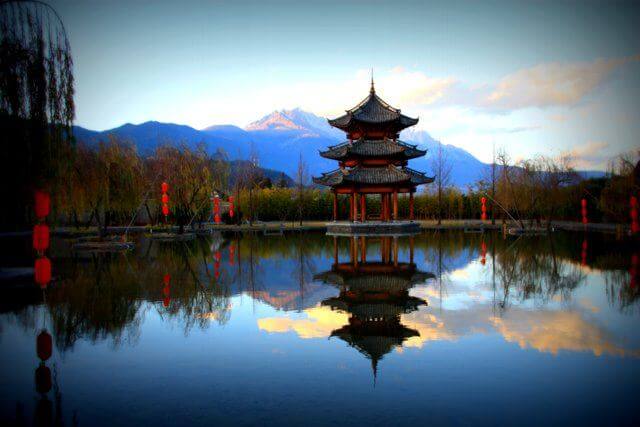
The view of Jade Dragon Snow Mountain, from the Banyan Tree
Shuhe
Shuhe is about 4km northwest of Lijiang Old Town, and feels like Lijiang did ten years ago, before it became excessively touristy. The streets are lined with shops and restaurants, all built of rocks from the surrounding mountains. These buildings also house the owner’s families, transforming it from a theme park like Lijiang, into a working town.
Shuhe is one of the earliest settlements of the Naxi people, built a thousand years ago as a crucial post on the Tea Trade routes. In the Naxi language, Shuhe means “a village at the foot of a peak”.
In the last ten years it’s been completely rebuilt. In 2002, over 500million rmb was spent remodelling the 5 square mile area. The channels and waterways still provide spring water to each house, but the tightly packed stone roads are home to a multitude of independent shops and restaurants, along with hotels ranging from youth hostels to a Banyan Tree resort.
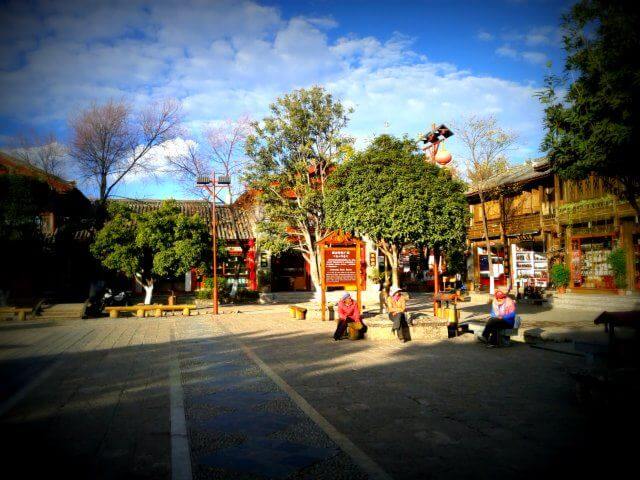
The main square, Sifang Jie, in Shuhe
Sights
The central square of Shuhe is Sifang Jie. By day it’s a car park for tour minibuses, but in the evening it comes alive with music and dancing. It’s surrounded by shops selling the local specialities of woodcarving and leatherwork, particularly cobblers.
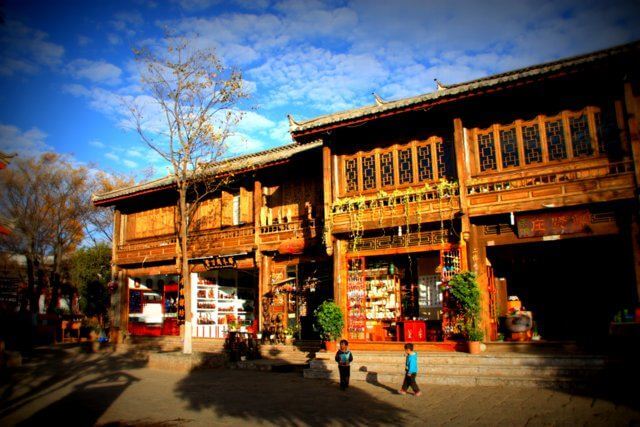
A couple of the leatherworking shops in Shuhe
The 25m wide Qinglong Bridge dates back to the 15th century and is considered the first to be built of the many bridges in Lijiang. It spans a small river that starts at the Jiuding Dragon Pool. The water is perfectly clear, so it’s possible to see the teeming fish below, untouched by the townsfolk who believe them to be spirits of the gods. The Naxi regard the spring as holy, and the Dragon Spring (Longquan) Temple lies on the riverbank.
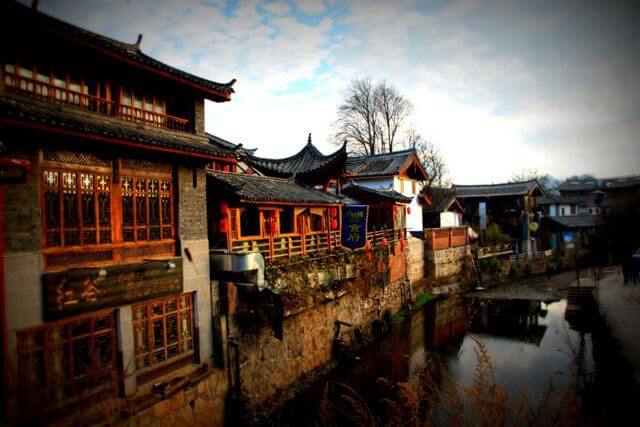
The view from QingLong Bridge in Shuhe
Shuhe used to be the centre of Lijiang town, so is also covered by Lijiang’s UNESCO World Cultural Heritage status along with the outlying town of Baisha.
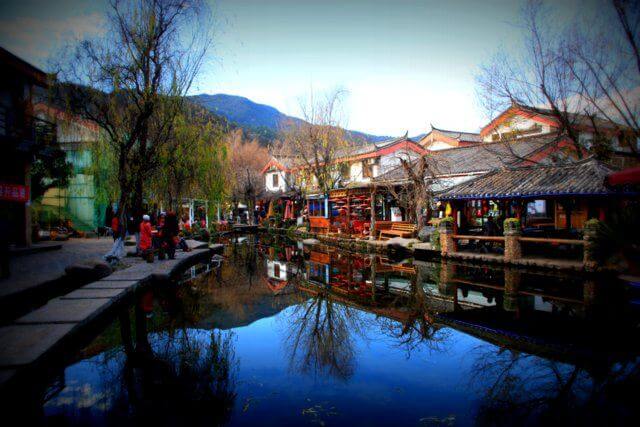
The main restaurant area in Shuhe Old Town
Eating
There are small food outlets dotted all over town, but the main eating area is on the north side of town, where modern restaurants lining the canal vie noisily for passing trade.
There are many options for food, but those by the main waterway seem exclusively to be foreign restaurants. We visited Mamma Mia, an Italian restaurant that also served Thai and Chinese. I ordered the only German dish on the menu. It was about as fresh and authentic as you’d expect a German meal to be in a remote village in Southern China…
Rich outsiders own many of these larger venues, capitalising on the town’s growing popularity. They aren’t worried about profits or repeat business, and the quality of the food reflects this.
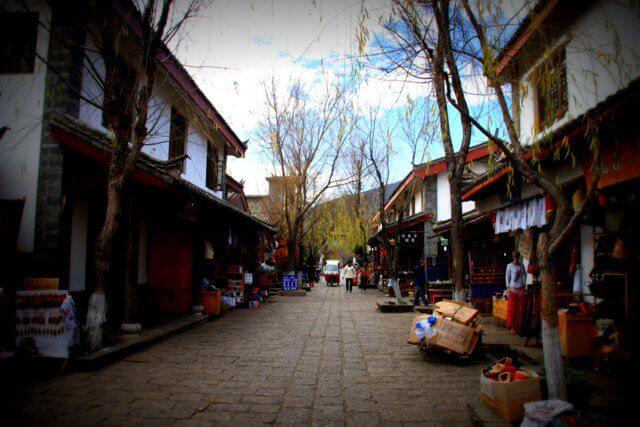
The main street in Shuhe, leading away from the taxi drop-off area
Getting to Shuhe
There are regular shuttle buses from Lijiang Old Town to Shuhe Ancient Town costing 5rmb.
Alternatively, it’s simple to take a 20-minute taxi ride there, but it’s trickier on the way back without being charged a ‘waiting fee’, even if the cab has only just dropped someone off.
Bicycles can be rented in Lijiang, but the journey takes over an hour and it’s cheaper to get a taxi.
The corporation that rebuilt the town still requires a 30rmb entrance fee, in addition to the governments 80rmb Lijiang Old Town Preservation Receipt.






Pingback: Jade Dragon Snow Mountain, near Lijiang | YNFAH
Pingback: Black Dragon Pool in Lijiang, Yunnan Province | YNFAH
Pingback: @mummy_t
Pingback: Karina Santoso 郑丽洁 (@karinathania)
Pingback: Hugh Grigg (葛修远) (@EastAsiaStudent)
Your photos are spectacular – such a beautiful place!
Pingback: Fancy That (@FancyThatMtclr)
Pingback: Adventurocity (@adventurocity)
I’m glad to have happened upon this post. We used to live in LJ twelve years ago and hate to hear how touristy it has become. When we lived there the only western food we could get was what some foreigners had taught locals to make: burgers, mediocre apple pie, and the occasional not-so-great pizza. And we loved it that way. I hear there is even a Starbucks in LiJiang now?? When we take our kids back to see where we met, maybe we’ll stay in Shu he instead – interesting that there is an entry fee to the town. Thanks for posting.
There’s a Starbucks on the main square…I’d imagine Shuhe will go the same way within a couple of years. People who have been to Lijiang since tell me they were happy just basing themselves in a comfortable hotel in the new town and visiting the old town like it were a theme park.